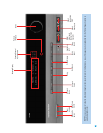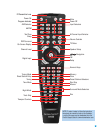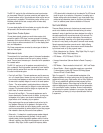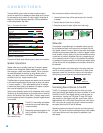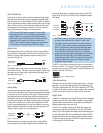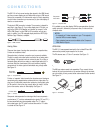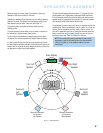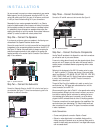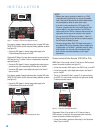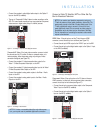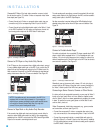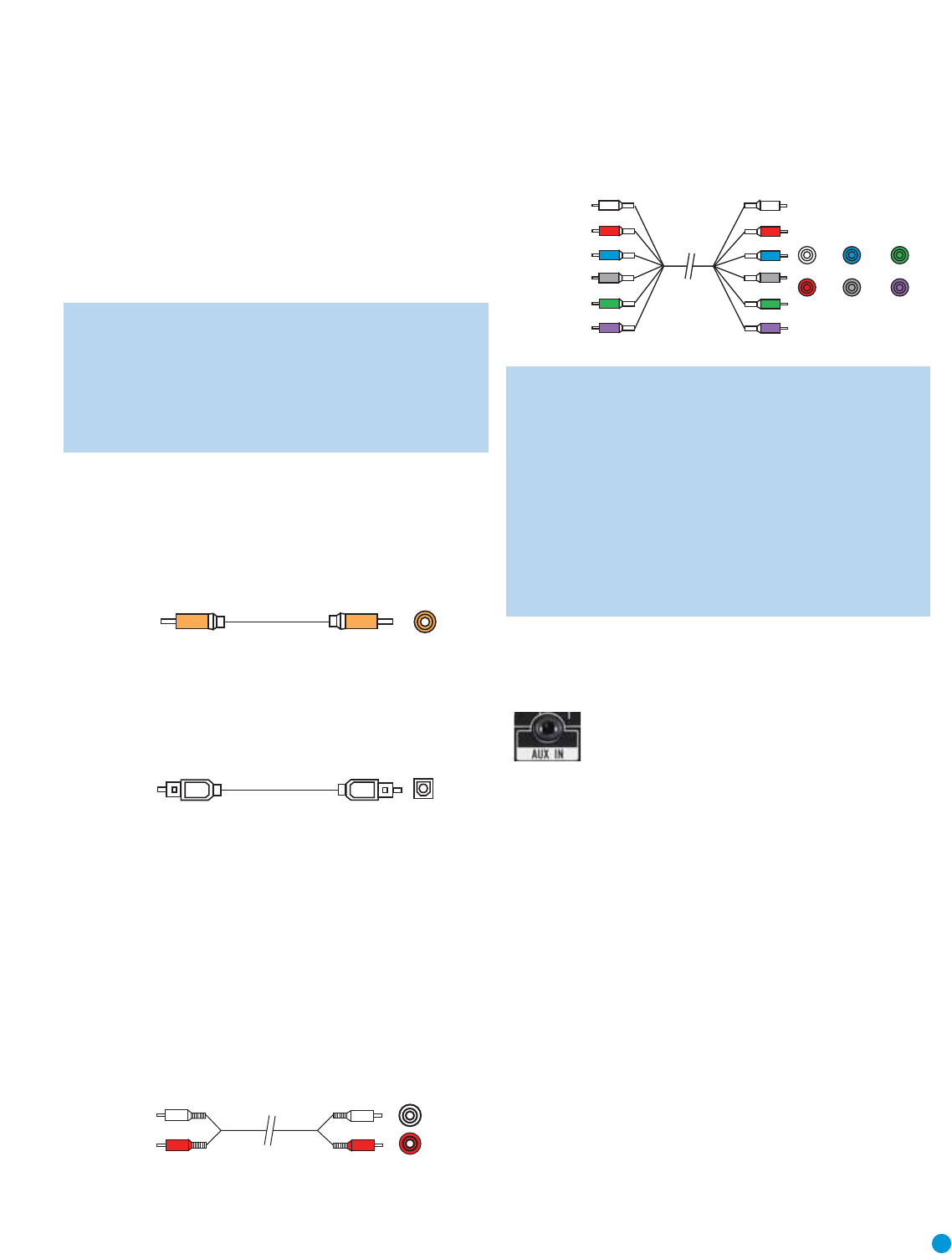
17
17
CONNECTIONS
Audio Connections
There are two formats for audio connections: digital and analog. Digital
audio signals are required for listening to sources encoded with digital
surround modes, such as Dolby Digital and DTS. The AVR 154 uses two
types of digital audio connections: coaxial and optical. Either type of digital
audio connection may be used for each source device, but never both
simultaneously for the same source. However, it’s okay to make both
analog and digital audio connections to the same source.
NOTE: Although HDMI cables are capable of carrying digital
audio signals, the AVR 154 is not designed to process those
signals. Therefore, if your source and video display are both
HDMI-capable, use the HDMI connections for video only. Make
a separate audio connection from the source device to the
AVR 154, and consult the owner’s manual for the source device
for instructions on muting the device’s HDMI audio output.
Digital Audio
Coaxial digital audio jacks are usually color-coded in orange. Although
they look similar to analog jacks, they should not be confused, and you
should not connect coaxial digital audio outputs to analog inputs or
vice versa. See Figure 4.
Figure 4 – Coaxial Digital Audio
Optical digital audio connectors are normally covered by a shutter to
protect them from dust. The shutter opens as the cable is inserted.Input
connectors are color-coded using a black shutter, while outputs use a
gray shutter. See Figure 5.
Figure 5 – Optical Digital Audio
Analog Audio
Analog connections require two cables, one for the left channel (white)
and one for the right channel (red). These two cables are often attached
to each other for most of their length. See Figure 6. Most sources that
have digital audio jacks also have analog audio jacks, although some
older types of sources, such as tape decks, have only analog jacks. For
sources that are capable of both digital and analog audio, you may wish
to make both connections. If you wish to record materials from DVDs
or other copy-protected sources, you may only be able to do so using
analog connections. Remember to comply with all copyright laws if you
choose to make a copy for your own personal use.
Figure 6 – Analog Audio
Multichannel analog connections are used with some high-definition
sources where the copy-protected digital content is decoded inside
the source. These types of connections are usually used with DVD-
Audio, SACD, Blu-ray Disc, HD-DVD and other multichannel players.
See Figure 7.
Figure 7 – Multichannel Analog Audio
NOTE: When using the 6-Channel Analog Audio Inputs, make
an analog video connection for the device. To enjoy a multi-
channel disc, select the source input for the video connection,
e.g., DVD, or simply use the component video inputs assigned
to the 6-Channel Analog Audio Inputs (see Initial Setup section
for an explanation on assigning video inputs), then select the
6-Channel Analog Audio Inputs as the source. If no signal is
present at the component video inputs assigned to the 6-Channel
Analog Audio Inputs, the AVR 154 will use the last-selected
analog video input, which is DVD in this example. It is not possible
to select an HDMI input for video while using the 6-Channel
Analog Audio Inputs for audio.
The AVR 154 also offers an Auxiliary Audio Input on the rear panel in
the form of a stereo 1/8" mini jack. Connect the headphone output of
any audio source, such as an MP3 player or portable CD player, to the
Auxiliary Audio Input. See Figure 8.
Figure 8 – Auxiliary Audio Input
Video Connections
Although some sources produce an audio signal only (e.g., CD player,
tape deck), many sources output both audio and video signals (e.g.,
DVD player, cable television box, HDTV tuner, satellite box, VCR, DVR).
In addition to the audio connection, make one type of video connection
for each of these sources (but only one at a time for any source).
Digital Video
The AVR 154 is equipped with three HDMI (High-Definition Multimedia
Interface) inputs, and one output. HDMI is capable of carrying digital
audio and video information using a single cable, thus delivering the
highest possible quality picture and sound.
The AVR 154 is capable of switching the HDMI data, passing the
incoming audio and video data (including 1080i and 1080p video),
directly to your HDMI-capable video display, without processing any of
the data. Although the AVR154 is compatible with virtually any HDMI-
capable source device and video display, a separate audio connection
is required for each source, since the AVR 154 doesn’t have access
to the audio data in the HDMI stream.
Multichannel
analog audio
cable (RCA)
Front Surround Center
Subwoofer
L
R
A
nalog audio
cable (RCA)
Optical
Optical digital
audio cable
Coaxial
Coaxial digital
audio cable



